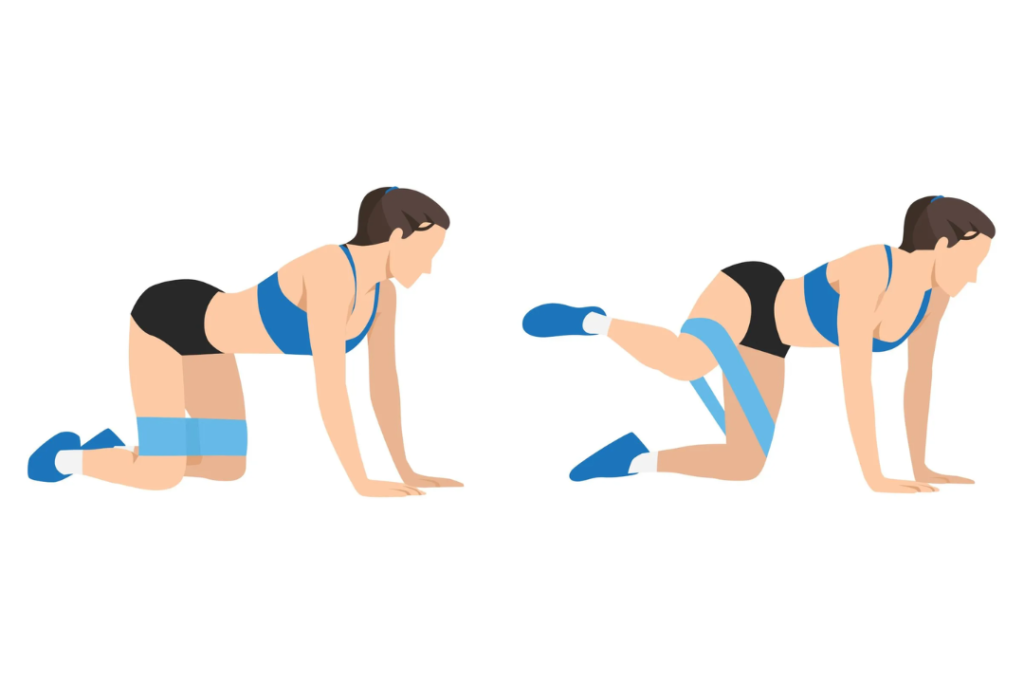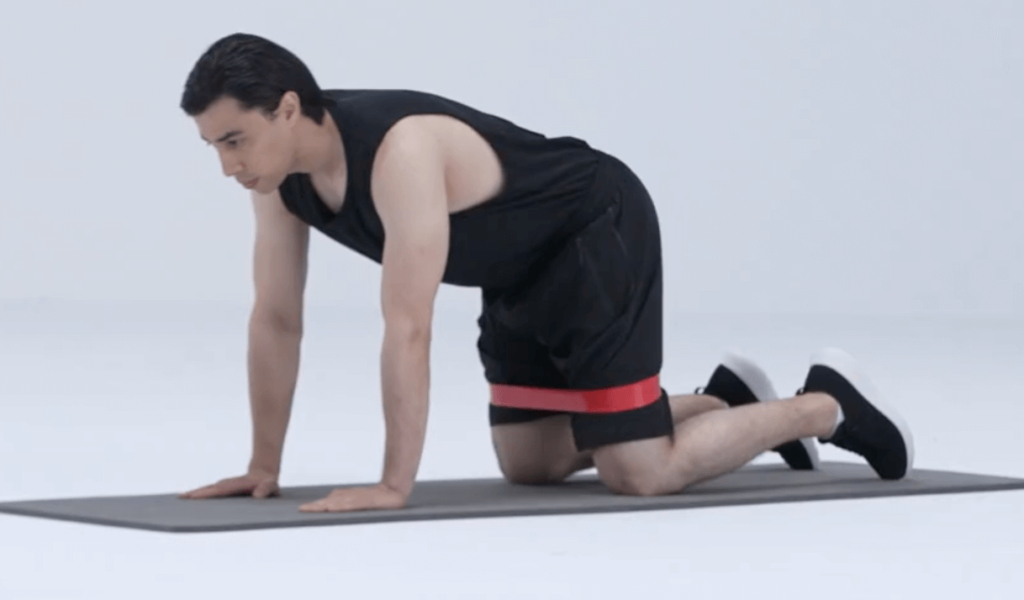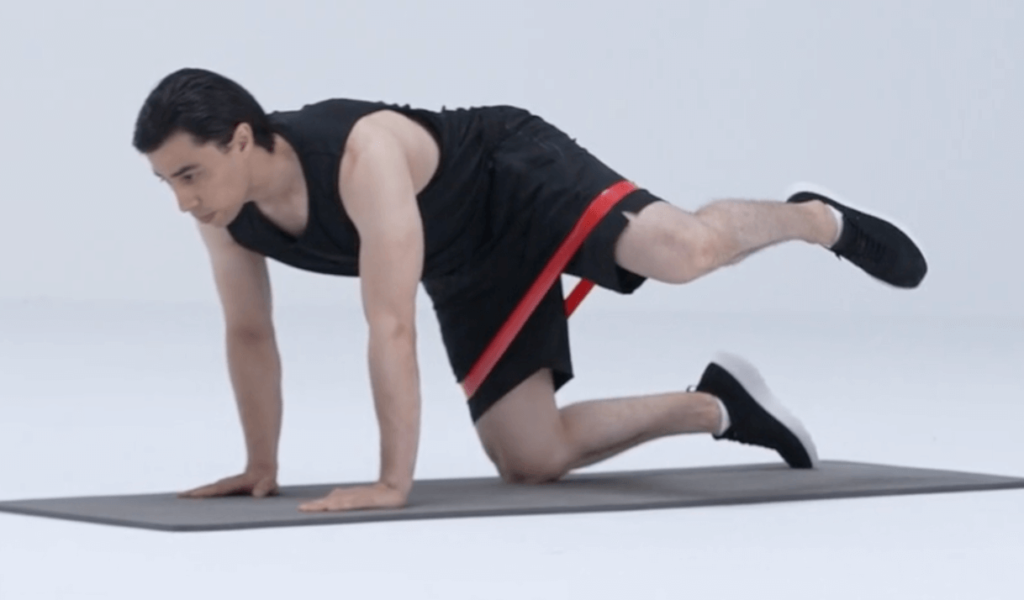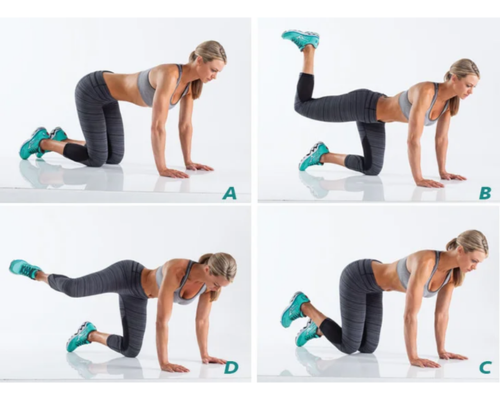Banded Fire Hydrant | Exercise Guide

Introducing the Banded Fire Hydrant—an exercise that will set your glutes ablaze! It’s a recipe for sculpting those glutes and hips while unleashing a whole new level of strength and stability. Whether you’re a fitness enthusiast looking to amp up your routine or a newcomer seeking an exercise that’s both effective and entertaining, the Banded Fire Hydrant is here to steal the show. Get ready to activate those glute muscles, enhance your hip mobility, and ignite your fitness journey with this captivating exercise that’s sure to make a splash in your workout routine!
Key Takeaways
Targeted Muscle Group: Banded Fire Hydrants specifically target the gluteus medius, which is crucial for hip stability and lower body strength.
Core Engagement: Engaging core muscles is essential to maintain proper form and balance during the exercise, leading to improved core strength and stability.
Injury Prevention: Strengthening the glutes and hips through Banded Fire Hydrants can help prevent common lower body injuries like knee pain, IT band syndrome, and lower back issues.
Customizable Sets and Reps: The number of sets (2-4 right leg) and repetitions (10-15 per left leg) for Banded Fire Hydrants can be adjusted based on individual fitness goals and levels.
Variety in Lower Body Exercises: Apart from Banded Fire Hydrants, incorporating exercises like Squats and Fire Hydrant Kick can be great exercise to further strengthen hip muscles and improve overall lower body strength.
Banded Fire Hydrant Instructions
Banded Fire Hydrant is an exercise that targets the glutes and hips. It involves using a resistance band to add an extra challenge to the movement. Perform the fire hydrant exercise variations using the Fire Hydrants as usual. Here are instructions on how to perform the Banded Fire Hydrant exercise:
Start by placing a resistance band around your thighs, just above the knees. Choose a band with an appropriate level of resistance for your fitness level.
Position yourself on all fours on a mat or comfortable surface. Align your hands directly under your shoulders and your knees under your hips.
Engage your core muscles by drawing your belly button towards your spine. Maintain a neutral spine throughout the exercise, avoiding any excessive arching or rounding of the back.
Keeping the resistance band taut, begin the movement by lifting one leg out to the side, while keeping the knee bent at a 90-degree angle. This motion should resemble a dog lifting its leg to a fire hydrant.
Hold the position for a moment at the top, then slowly lower your leg back to the starting position, controlling the movement.
Repeat the movement on the same leg for the desired number of repetitions, typically 10-15, or as recommended by your fitness level and goals.
Switch to the opposite leg and perform the same movement, lifting it out to the side while maintaining the 90-degree knee bend.
Continue alternating between legs for the desired number of sets or time.


Sets And Reps
The number of sets and reps for the Banded Fire Hydrant exercise can vary depending on your fitness goals, current fitness level, and the overall structure of your workout routine. Here are some general guidelines:
Sets
Aim for 2-4 sets of the Banded Fire Hydrant exercise. Starting with fewer sets and gradually increasing the number as you progress is a good approach. If you’re a beginner, start with 2 sets and gradually work your way up.
Reps
Perform 10-15 reps per leg for each set. This range is suitable for most individuals. However, if you find it too challenging or not challenging enough to start position, you can adjust the number of reps accordingly. If you’re a beginner, you can start with fewer reps, such as 8 reps left leg.
Rest
Take a short rest period, around 30-60 seconds, between sets to allow for recovery. This will help maintain the quality of your form and performance throughout the exercise.
Remember, it’s important to listen to your body and adjust the sets and reps based on your individual needs and abilities. If you’re new to this exercise or have any underlying health conditions, it’s always a good idea to consult with a fitness professional to get personalized recommendations.
Banded Fire Hydrant Benefits
The Banded Fire Hydrant exercise offers several benefits for your lower body, particularly targeting the glutes and hips. Here are some of the benefits of incorporating Banded Fire Hydrants into your workout routine:
Glute Activation
The Banded Fire hydrants and Hydrant specifically targets the gluteus medius, which is an important muscle for hip stability and overall lower body strength. By activating and strengthening the gluteus medius, with the banded fire hydrant exercise benefits of hydrants and hydrant exercises you can improve your hip stability top knee back, balance, and overall functional movement patterns.
Hip Strength and Mobility
The exercise engages the hip abductor muscles, including the gluteus medius and minimus, which play a crucial role in the hip extension, stabilizing external rotation of the hips and maintaining proper alignment hip movement. Strengthening these hip abduction back muscles can contribute to improved hip strength, mobility, and overall movement quality.
Core Engagement
The Banded Fire Hydrant exercise requires core stabilization to maintain proper form and balance. This engagement of the core muscles adds an additional benefit to the above. In a nutshell, fire hydrant exercise benefits core stability.
Injury Prevention
Strengthening the glutes and hips through exercises like the Banded Fire Hydrant can help prevent common lower body injuries, such as right knee pain, IT band syndrome, and lower back issues. By improving hip stability and strength, you can reduce the risk of imbalances and compensations in hip joints that can lead to injuries.
Remember to use proper form, engage the targeted muscles throughout the movement, and gradually increase the resistance of left arm to the resistance band.
Banded Fire Hydrants Variation
Here are two exercise variations that target the lower body, specifically the hip muscles, while also shaping and strengthening the thighs, hips, legs, and glutes:
Standing Fire Hydrants
Standing fire hydrants is another effective exercise that targets the glute muscles, particularly the gluteus medius. Here’s how to perform the Standing Fire hydrants and Hydrants:
Starting Position:
Stand with your feet hip-width apart and hands-on-hips or extended in front of left side or right hand side of you for balance.
Execution:
Raise your right leg to the side, lifting the knee while keeping the other front leg completely extended and bent at a 90-degree angle.
Focus on engaging your glutes as you take one from left knee to lift body weight off the leg, squeezing at the top of left knee during the movement.
Hold for a moment at the top position to maximize muscle contraction.
Fire Hydrant Kick
The Fire Hydrant Kick exercise is a combination movement that combines the standing Fire Hydrant and the Glute Kickback exercises. Here’s how to perform the Fire Hydrant Kick:
Start on all fours on a mat or comfortable surface. Align your hands directly under your shoulders and your knees under your hips.
Engage your core muscles by drawing your belly button towards your spine. Maintain a neutral spine throughout the exercise, avoiding any excessive arching or rounding of the back.
Raise one leg out to the side with your knee bent at a 90-degree angle, resembling the movement in the Fire Hydrant exercise.
Once your leg is lifted to the side, extend it straight back behind you. Keep your foot flexed and your leg in line with your body.
Reverse the motion by bending your knee and returning your leg to the initial position, then lowering it back down to the ground.
Repeat the movement on the same leg for the desired number, typically 10-12.
Conclusion
Incorporating Banded Fire Hydrants into your workout routine can provide a range of benefits including targeted glute activation, improved hip strength and mobility, core engagement, and injury prevention. By following proper form, gradually increasing resistance, and customizing sets/reps to individual needs, individuals can enhance lower body strength, core stability, and functionality.
Additionally, exploring complementary lower body exercises like Squats and banded Fire hydrants with Hydrant Kick can offer a well-rounded approach to strengthening hip muscles and achieving overall lower body fitness goals.
Banded Fire Hydrant FAQs
What are banded fire hydrants good for?
Banded fire hydrants mainly work on the gluteus maximus. Regular use can sculpt your glutes, improve back pain and decrease the risk of injury.
What part of the glutes do fire hydrants work?
Gluteus maximus. They’ll help your butt look more toned and sculpted, improve your posture, lower your risk of injury, and reduce back pain and knee pain.
References
Daniel Bubnis, M.S. (2019). How to Do Fire Hydrant Exercises. Available at: https://www.healthline.com/health/exercise-fitness/fire-hydrant-exercise [Accessed 26 Mar 2024].
Paulina Kairys. (2023). Fire Hydrant Exercise: How To, Benefits, & Variations. Available at: https://www.setforset.com/blogs/news/fire-hydrant-exercise [Accessed 26 Mar 2024].
Popular Workouts

15 Minutes upper glute workout
Build your upper booty. Work your legs and booty from all angles with this 29-minute bodyweight workout.

15 Minutes upper glute workout
Build your upper booty. Work your legs and booty from all angles with this 29-minute bodyweight workout.

15 Minutes upper glute workout
Build your upper booty. Work your legs and booty from all angles with this 29-minute bodyweight workout.


